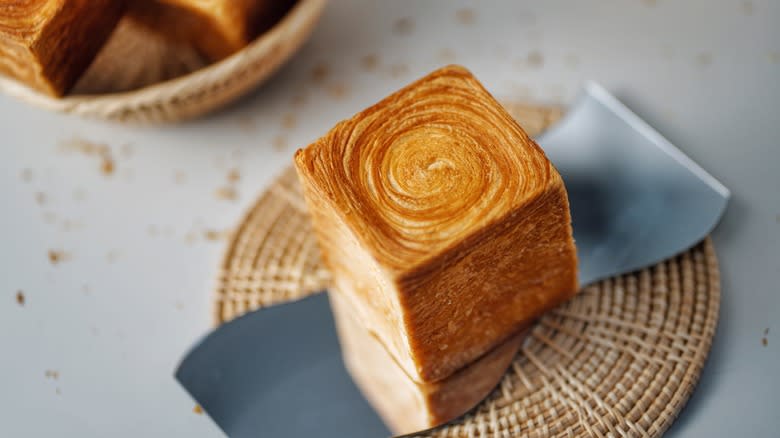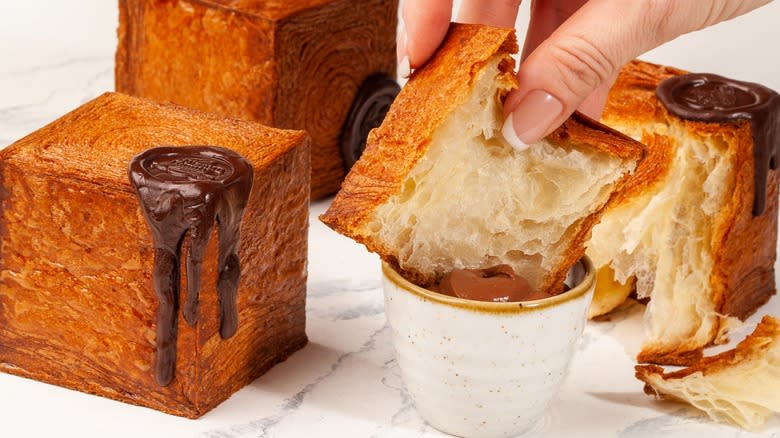How Exactly Are Those Trendy Croissant Cubes Made?

Even if you've never made them from scratch, it's readily apparent how the classic croissant gets its shape. Considering a lot of people actually eat their croissants by unraveling the layers as they go, it's easy to see that the dough is rolled up onto itself (a process called lamination). When it comes to those trendy croissant cubes, on the other hand, how they're made is more of a mystery. Even though they taste identical to regular croissants, and the dough is just as flaky and delicious, they take on a perfect, cubical shape.
While turning croissant dough into a cube seems like it would be extra complicated, the truth is it isn't too different from the traditional method of making croissants. The recipe is the same, but instead of rolling up the dough, it's simply cut into squares and then stacked until the layers form a cube. To help the dough keep its shape in the oven, it gets baked in a straight-sided pan. You can also achieve similar results by letting unbaked croissants proof in a cube-shaped pan and then baking them in that same pan.
Read more: 8 Baking Sheet Mistakes You Want To Avoid
How Were Croissant Cubes Invented

Though the viral videos on TikTok would have you believe that croissant cubes were invented by the Le Deli Robuchon in London, the now famous bakery is only responsible for popularizing it. The concept was initially conceived back in 2018 by Bedros Kabranian. An award-winning pastry chef from Sweden, Kabranian shared with Fine Dining Lovers that he had been working on figuring out how to reimagine the croissant and found his answer when he discovered a baking mold in China. After experimenting with it, the croissant cube was born.
In early 2023, Le Deli Robuchon began making and selling Kabrarian's creation but rebranded the pastry as "Le Cube Robuchon." Thanks to social media, Le Cube Robuchon attracted the attention of foodies all over the world, who eagerly flocked to London to try it. Since then, croissant cubes have become widely available at many other bakeries.
Croissant Cubes Vs Traditional Croissants

For the most part, a croissant cube is exactly what it sounds like — a croissant shaped like a cube. However, aside from its shape, there is a notable difference. Croissant cubes have a slightly different texture. When you bake traditional croissants, only the bottom of the pastry comes in contact with the pan. But with croissant cubes, every single side except for the top does. Croissant cubes, therefore, end up having a crispier exterior, similar to what happens to the crispy brownie edges in the corners of the pan.
Croissant cubes also tend to be served differently from the crescent-shaped ones. While everyday croissants are typically sold plain or sometimes flavored with almond or chocolate, croissant cubes are almost always filled with a generous amount of custard, dipped in some sort of sauce, or, at the very least, dusted with powdered sugar. If they aren't enjoyed as a standalone pastry, they can be cut into slices and used like sandwich bread. In that sense, they might be considered more versatile than a traditional croissant (croissant breakfast sandwiches aside), but ultimately, the two pastries taste the same, and both are worth making.
Read the original article on Daily Meal.